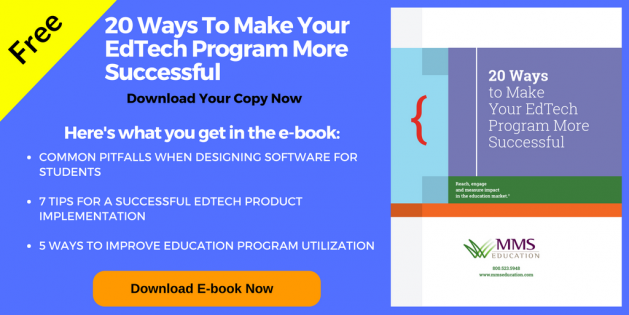By Melissa Butensky, User Experience Director MButensky@mmseducation.com
In my last blog “Do You Have an Education App For That? You Might Not Need One,” I outlined some considerations in deciding whether to build an app or a mobile website. If your organization has decided an app is the way to go, the next step is defining what the app will do.
Before brainstorming app concepts, it’s best to start with a solid foundation. Whether you write a strategic brief, outline a roadmap, or put together a set of guiding principles, make sure the whole team is aligned on these key points:
- The organizational or programmatic goal the app will support. When creative juices are flowing, it’s easy to get caught up in all the incredible technologies that can be leveraged in an app. Go for it—and put all those great ideas up on the wall! But before anyone gets too attached, take a step back and ask, “This is great – how well will it drive our goal?”
- Who will be using the app—and when, and where. The app will quickly grow ungainly if it’s trying to be too many things to too many people. Focus on one or two very specific user types. For example, “teachers” is too broad—focus instead on the grade level, subject, and environment (large/small school, urban/suburban/rural). Think through what this person’s day is like (even outside of what you think the app is about), what software they use, how they use mobile devices, what motivates or frustrates them. Developing fictional but believable personas is a great way to bring this to life so that the team can start to ask, “I personally love the concept, but would ‘Emily’ like it? Would she use it?”
Once your team has some app concepts that will engage educators and students while meeting your goals, here are a few ways you can reduce risk and make sure the concepts are on target and realistic:
- Test your concepts. This is a critical step, even if your team really feels they know the user group inside and out. Testing is best done in individual interviews using visuals, which can be a simple as hand-drawn sketches of an interface or as elaborate as a partially functioning prototype and a script to guide the discussion. The goal is to find out what your user will expect and value from this app, and to gain unexpected insights—not to sell the idea to them. A trained user-experience analyst or researcher can act as a neutral party and make the most of the time spent with users.
- Technical feasibility. Concept development should aim for “blue sky” ideas, but be sure your team is tethered to the ground, too. Technical feasibility is not usually restrained by imagination but rather by budget and timing. Be sure to include someone technical in your ideation sessions, since they may have creative ideas about how to accomplish your dream app and can also alert the team when a big idea will gobble up more than the available resources for development.
All of this preparation and concept work will definitely take some time, perhaps more than you would prefer. As tempting as it may be, avoid short-changing this phase as it can prevent a lot of inefficiency during development and launch.
If you would like to talk more about your team’s needs for an app, reach out! Call us today at 866-382-6116 or fill out this form.

